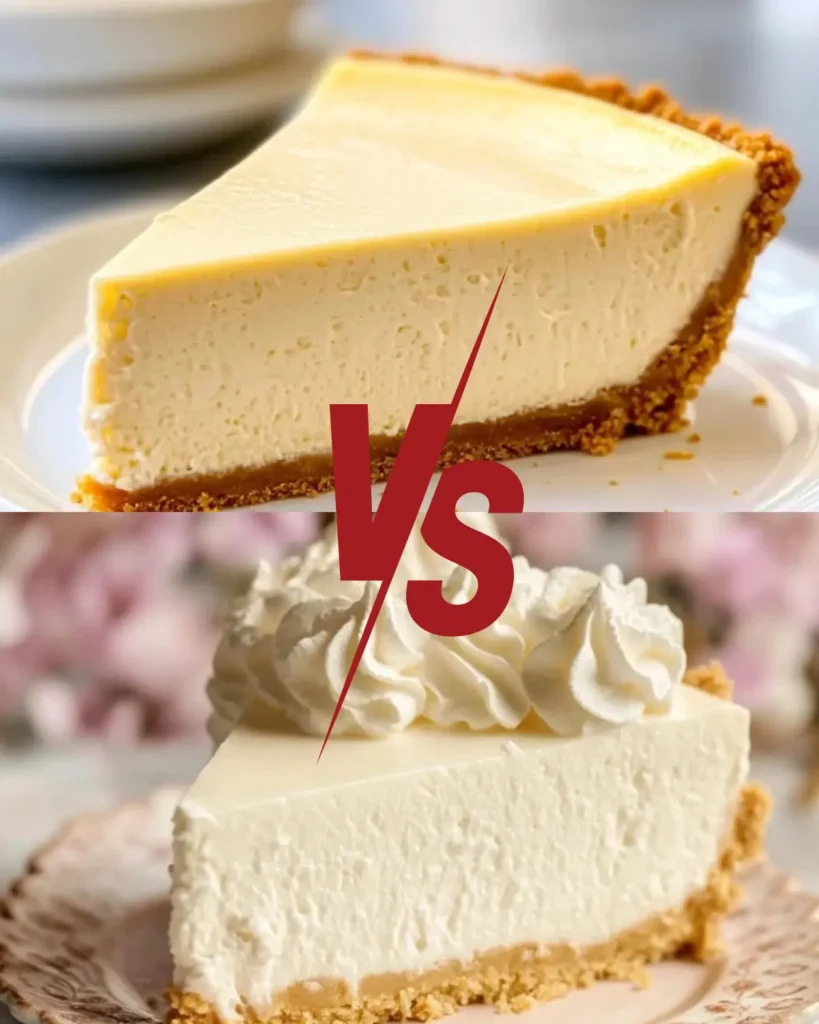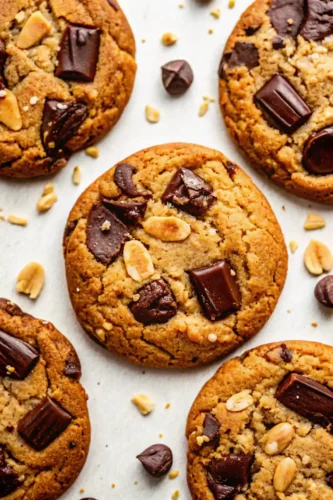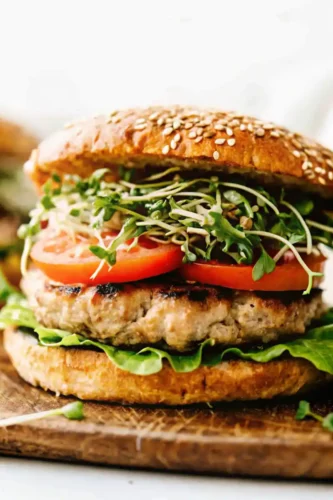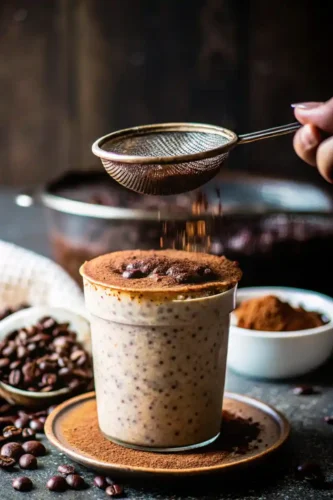Baked vs Continental Cheesecake—the ultimate dessert decision we’ve all faced! These two delicious options each offer a unique experience, from rich and creamy baked versions to the light and airy no-bake delights. Whether you’re planning a dessert for a special occasion or simply craving a treat, it’s essential to understand the differences between these two types of cheesecakes.

This article will walk you through the unique qualities of baked and continental cheesecakes. We’ll cover everything from their origins and preparation methods to their textures and flavors, helping you pick the perfect dessert for any moment.
Whether you’re an experienced baker or trying cheesecake for the first time, this guide will equip you with the knowledge and tips you need. Let’s dive into the world of cheesecake and uncover what makes each version so special!
What You’ll Love About Cheesecakes
Cheesecake is a beloved dessert around the world—and for good reason! People love cheesecake because it offers a perfect balance of sweetness and creaminess in every bite.
Whether you choose baked or continental cheesecake, you’ll enjoy:
- Delicious taste: Rich, creamy, and perfectly sweetened, cheesecake satisfies your sweet tooth without overwhelming your palate.
- Versatile dessert: Cheesecake is great for any occasion, from casual family dinners to elegant celebrations.
- Endless variety: With countless toppings, flavors, and crust options, there’s always something new to try.
Choosing between baked and continental cheesecake comes down to your personal preference for texture and ease of preparation. Let’s explore what makes each type uniquely delicious!
What is Baked Cheesecake?
Origin and Popularity
Baked cheesecake, famously known as New York-style cheesecake, originated in America but traces its roots back to ancient Greece. Today, it’s beloved globally for its rich, dense, and creamy texture. Many consider baked cheesecake the ultimate classic, making it a staple in bakeries and restaurants everywhere.

Texture and Taste
When you take a bite of baked cheesecake, you instantly notice its dense yet velvety texture. Unlike lighter desserts, baked cheesecakes have a substantial, creamy mouthfeel. The flavor is rich, mildly tangy, and sweet without being overpowering. Each bite melts slowly, delivering lasting satisfaction.
Typical Ingredients & Baking Method
Baked cheesecake typically includes these ingredients:
- Cream cheese
- Eggs
- Sugar
- Vanilla extract
- Graham cracker crust or biscuit base
The preparation involves blending these ingredients into a smooth batter, pouring it onto a crust, and baking gently in the oven. This slow baking method ensures the cheesecake sets firmly and achieves that iconic, dense consistency loved by dessert enthusiasts worldwide.
What is Continental Cheesecake?
Origin and Popularity
Continental cheesecake, also known as no-bake or European-style cheesecake, comes from various European culinary traditions. It’s especially popular in France, Germany, and Italy, where lighter desserts are common. People adore this cheesecake style for its effortless preparation and fresh, airy taste.

Texture and Taste
Continental cheesecakes have a smooth, fluffy, mousse-like texture. Unlike the dense baked cheesecake, the continental version feels lighter on your tongue. It offers a delicate sweetness, often balanced by fresh toppings like fruits or a subtle lemon zest. It’s perfect when you crave a lighter dessert experience.
Common Ingredients & Preparation Method
Typical ingredients for continental cheesecake include:
- Cream cheese
- Whipped cream
- Sugar
- Gelatin or agar-agar (vegetarian alternative)
- Digestive biscuits or cookie crust
Key Differences: Baked vs Continental Cheesecake
Preparation is straightforward: simply blend the cream cheese with whipped cream and gelatin. Pour this silky mixture onto a biscuit base and refrigerate it for several hours until set. No oven required, making this cheesecake style an easy favorite for quick desserts.
Baking vs No-Bake Preparation
The primary difference between baked and continental cheesecakes lies in the preparation method. Baked cheesecake requires careful oven baking at low temperatures. In contrast, continental cheesecake sets simply by chilling in the refrigerator. This makes the continental version quicker and easier for beginners or anyone short on time.
Texture and Consistency Comparison
- Baked Cheesecake: Has a dense, velvety texture. It feels firm and rich, yet smoothly melts in your mouth.
- Continental Cheesecake: Offers a lighter, airy, mousse-like consistency. It’s soft, fluffy, and delicate due to whipped cream and gelatin.

Flavor and Richness Differences
Flavor profiles differ significantly between these cheesecakes. Baked cheesecake develops deeper, richer flavors due to oven caramelization, offering a slightly tangy sweetness. Continental cheesecake, however, tastes fresher, lighter, and mildly sweet—perfect when paired with fruits or delicate sauces.
Quick Comparison Table
| Feature | Baked Cheesecake | Continental Cheesecake |
|---|---|---|
| Preparation Method | Oven-baked | Refrigerated (no baking) |
| Texture | Dense, creamy, velvety | Light, fluffy, mousse-like |
| Taste & Flavor | Rich, deep, mildly tangy | Fresh, mild, lightly sweet |
| Typical Ingredients | Cream cheese, eggs, sugar, biscuit crust | Cream cheese, whipped cream, gelatin |
| Ease of Preparation | More involved, requires baking and cooling | Quick, easy, no oven needed |
| Popular Variations | Classic New York-style | European-style cheesecake |
| Storage & Shelf Life | Longer shelf life (up to 5-7 days refrigerated) | Shorter shelf life (3-5 days refrigerated) |
Health & Nutritional Comparison
When it comes to choosing between baked and continental cheesecake, health and nutrition can play a big role. Let’s take a look at how they compare nutritionally.
- Baked Cheesecake: Typically higher in calories and fat due to the use of cream cheese, eggs, and sugar. Baking also tends to concentrate the flavors, adding richness and density. A standard slice contains about 300-450 calories, with a significant amount of saturated fat.
- Continental Cheesecake: Often a bit lower in calories, especially if you use reduced-fat cream cheese and whipped cream. However, adding gelatin or similar stabilizers may slightly increase the carbohydrate count. A slice generally ranges from 250-400 calories and offers a lighter mouthfeel.
Key Nutritional Differences
- Protein Content: Baked cheesecake often contains more protein due to the higher egg content.
- Sugar Content: Both styles contain sugar, but continental versions can be adjusted to lower sugar levels.
- Fat Content: Baked cheesecakes are usually higher in fat because of eggs and full-fat cream cheese.
Options for Special Diets
If you’re looking for a cheesecake option that fits a specific dietary need, here are some ideas:
- Gluten-Free: Use gluten-free biscuits or graham crackers for the crust in either version.
- Low-Sugar: Substitute regular sugar with a natural sweetener like stevia or monk fruit.
- Vegan: Use plant-based cream cheese and coconut cream for the continental version, along with agar-agar instead of gelatin.
- Low-Fat: Opt for low-fat cream cheese or Greek yogurt to lighten both cheesecake styles.
For those seeking a lighter dessert, continental cheesecake might be the better choice, but baked cheesecake remains the go-to for indulgent occasions.
Tips and Tricks for Perfect Cheesecake
Tips for Baked Cheesecake Success
- Use Room Temperature Ingredients: This helps achieve a smooth batter and prevents lumps.
- Avoid Overmixing: Overmixing can introduce air, leading to cracks on the surface.
- Water Bath Baking: Bake your cheesecake in a water bath to ensure even heat and prevent cracking.
- Slow Cooling: Allow the cheesecake to cool gradually in the oven with the door slightly open to reduce the risk of cracking.
Tips for Continental Cheesecake Success
- Chill Properly: Make sure to refrigerate for at least 4 hours, preferably overnight, for the best set.
- Balance the Gelatin: Too much gelatin can make the texture rubbery; use just enough to set the cake.
- Smooth Mixture: Beat the cream cheese until smooth before adding whipped cream to avoid lumps.
- Add Flavors Early: Mix in fruits, zest, or flavorings early so they blend well without affecting the setting process.
With these tips, your cheesecake—whether baked or continental—will come out perfect every time!
How to Store Your Cheesecake
Proper storage is key to keeping your cheesecake fresh and tasty, whether it’s baked or continental.
- Refrigeration: Store cheesecakes in an airtight container in the fridge. Baked cheesecakes can last up to 5-7 days, while continental cheesecakes are best eaten within 3-5 days.
- Freezing: You can freeze baked cheesecakes for up to 1 month. To do this, wrap the cheesecake tightly in plastic wrap, then in foil. Thaw in the fridge overnight before serving. Continental cheesecakes don’t freeze as well due to their delicate texture.
- Serve Cold: Always serve cheesecake chilled. For baked cheesecake, remove from the fridge 15-20 minutes before serving for the best texture. Continental cheesecake can be served directly from the fridge.
Follow these tips to enjoy your cheesecake at its best, bite after bite!
Try It & Share Your Twist!
Ready to decide between baked and continental cheesecake? Why not try making both and share your favorite! Experiment with different flavors, toppings, or crusts to make the dessert your own. Share your twist on Facebook and tag us so we can see your delicious creations!

Baked vs Continental Cheesecake
Ingredients
For Baked Cheesecake
- 2 cups graham cracker crumbs for crust
- 1/2 cup melted butter for crust
- 3 packages (8 oz) cream cheese softened
- 1 cup sugar
- 3 large eggs
- 1 teaspoon vanilla extract
- 1/2 cup sour cream
For Continental Cheesecake
- 2 cups digestive biscuit crumbs for crust
- 1/2 cup melted butter for crust
- 16 oz cream cheese softened
- 1/2 cup sugar
- 1 teaspoon vanilla extract
- 1 cup whipped cream
- 1 tablespoon gelatin powder or agar-agar
- 1/4 cup water for gelatin
Instructions
For Baked Cheesecake
- Preheat oven to 325°F (163°C) and grease a 9-inch springform pan.
- Mix graham cracker crumbs and melted butter. Press into pan and bake for 10 minutes. Cool crust.
- Beat cream cheese and sugar until smooth. Add eggs one at a time, mix well. Stir in vanilla and sour cream.
- Pour filling over crust. Bake 50-60 minutes. Turn off oven and let sit 1 hour.
- Cool completely, then refrigerate at least 4 hours before serving.
For Continental Cheesecake
- Mix biscuit crumbs and melted butter. Press into pan and chill.
- Bloom gelatin in water for 5 minutes. Warm until dissolved.
- Beat cream cheese and sugar until smooth. Add vanilla and gelatin. Fold in whipped cream.
- Pour mixture over crust and refrigerate at least 4 hours.
- Garnish with fruit or glaze. Keep chilled until serving.
Notes
Frequently Asked Questions – Baked vs. Continental Cheesecake
What are the three types of cheesecake?
Cheesecakes can be broadly categorized into three popular types:
– Baked Cheesecake: This is a dense and creamy dessert that’s oven-baked. It typically includes ingredients like eggs and heavy cream, which give it a custard-like texture. For example, the New York-style cheesecake is one of the most iconic variations.
– Continental Cheesecake (No-Bake Cheesecake): On the other hand, this type is a light and mousse-like cheesecake that sets in the fridge. It often relies on whipped cream or gelatin to achieve its structure, making it perfect for warmer days or when baking isn’t an option.
– Regional Variations: Additionally, there are unique types of cheesecakes from around the world. For instance, Basque cheesecake is known for its burnt top, Japanese cheesecake is fluffy and airy, and ricotta cheesecake is light with a slightly grainy texture.
Is sour cream or heavy cream better for cheesecake?
It depends on the texture and flavor you’re aiming for:
– Sour Cream: Adds tanginess and helps create a denser, creamier texture, making it ideal for baked cheesecakes.
– Heavy Cream: Contributes richness and a lighter texture, often preferred for continental or no-bake cheesecakes.
What are the three types of cheesecake?
As highlighted earlier, the three main types are baked, continental (no-bake), and regional variations. Each offers a unique flavor and texture, catering to a wide variety of preferences.
Related Recipes You’ll Love
Looking for more cheesecake inspiration or similar treats? Check out these delicious recipes from the Twirl Recipes collection:






